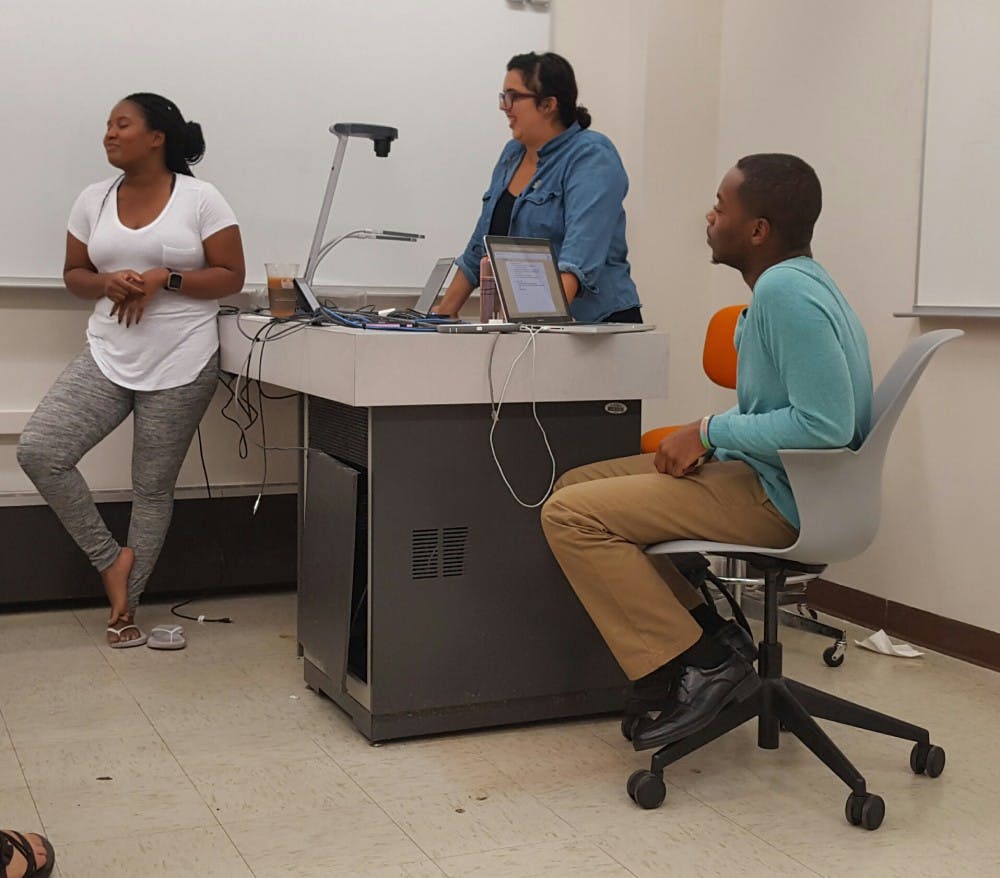The Alliance of Black and Latino Teachers (ABLT) met for the first time this semester on Sept. 14 to discuss diversity in educators.
The mission of ABLT is to build connections between members and increase the prevalence and retention of black and Latino teachers. The group, which met in Robert Bell, is not just for minority educators.
Kayla Veal,
“The club is open to absolutely everyone, no matter their race or their major. We’ve had social workers, we’ve had just people wanting to come in and listen,” Veal said. “We’ve had a few white members who were really dedicated and they were like, ‘I don’t know how to deal with these black students [in the classes they taught]. Help me. Teach me. I want to learn.’”
ABLT, which was founded in part by Veal in 2014, includes Latino students for the first time this year.
“Another English educator, Troi Genders, who is also co-president with me, was like, ‘Hey, it would be a good idea to include Latinos because we’re a minority as
ABLT’s biggest project this year is community outreach.
With the help of faculty sponsor Darolyn “Lyn” Jones, the organization hopes to partner with Muncie Central High School and start an ABLT chapter there. The Ball state chapter will teach and mentor the high school students — then it wants to send high school members to help teach at-risk students at Longfellow Elementary School.
“These students need to see that they are important, they have role models, they can be successful. They don’t have to shy into the background because of stereotypes. I strongly believe that they need that person that they can look up to,” Veal said.
Erick Martinez, a sixth-year Spanish education psychology major, came to his first ABLT meeting Sept. 14. He heard about it
“I think it’s important for [minorities] to have a role model. Someone that we can look up to, someone that we can identify with, someone that we can refer back to whenever we’re having troubles or need advice,” Martinez said.
As someone who named an old high school teacher as his mentor, Martinez also felt it was important to solve the lack of diversity in educators.
“You can either be part of the problem or part of the
According to the 2015-2016 Ball State Fact Book, 15.7 percent of undergraduate students were ethnic minorities, which is up 1 percent from 2014-2015. African-American undergraduates made up 7.5 percent of the total undergraduate population; 4.2 percent were Latino.
In Indiana, black teachers made up 4.2 percentage of all teachers, and Latinos, 2.7 percent, in 2011-2012, according to the US Department of Education.
“I felt like I’ve never really been the minority in a sense until I came to Ball State, and then I was one of three African Americans in the secondary English education program,” Veal said. “And the other two dropped. So now I feel like, okay, it’s just me in this, and I feel like I need that support now more than ever because college is very hard.”
ABLT hopes to meet again Sept. 21 in the Art and Journalism Building or Robert Bell for a second part of the callout meeting.





